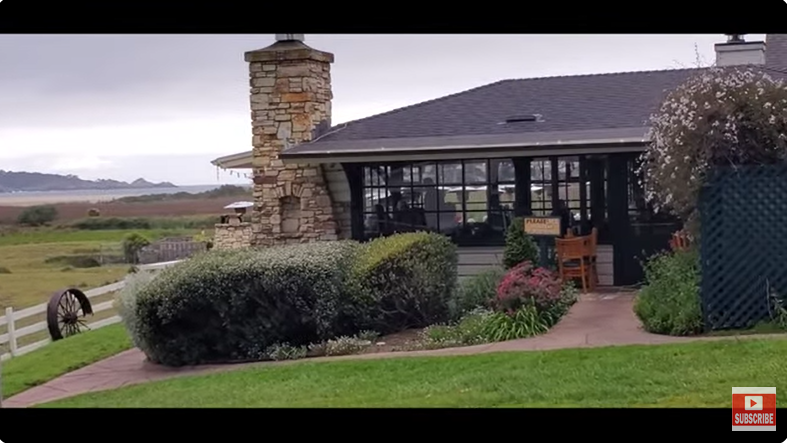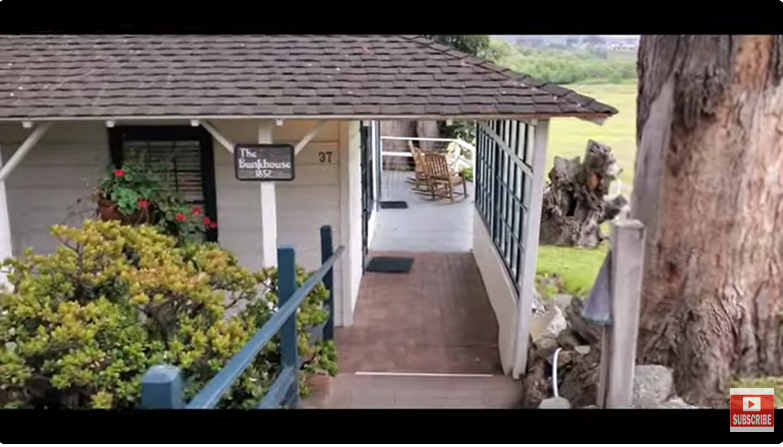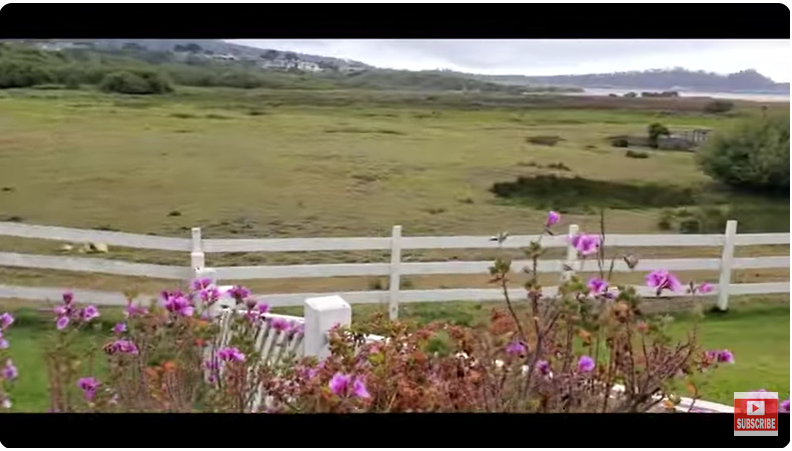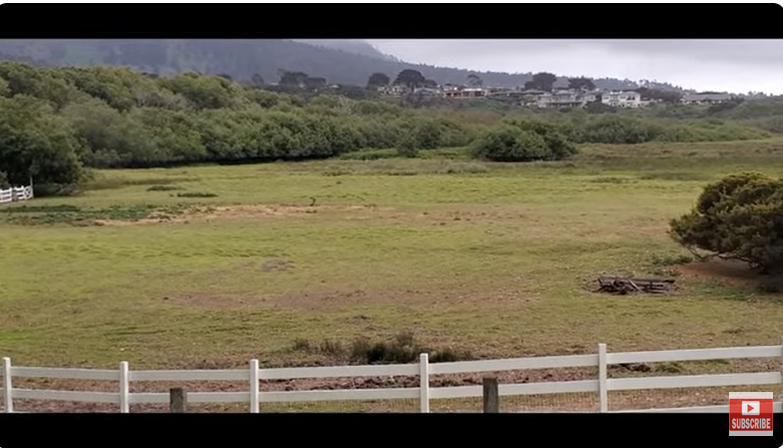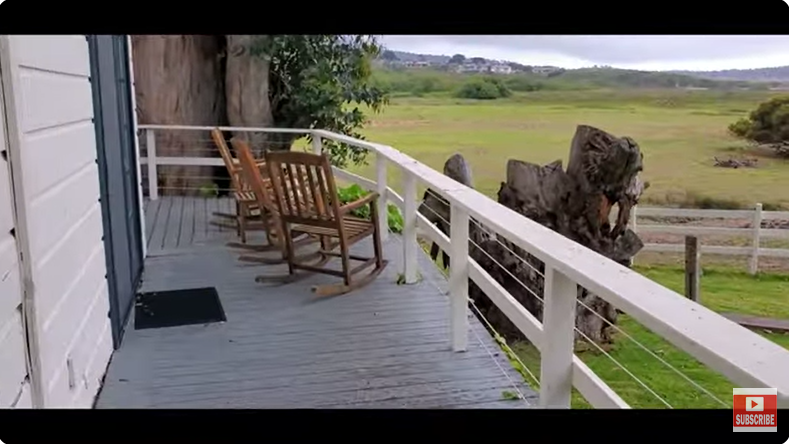Over the past weekend, Meghan Markle turned heads in a chic, backless black dress. She wore the dress for a dinner she attended with Prince Harry and their friends.
According to posts shared by fellow attendees, Delfina Blaquier and Ignacio Figueras, the event was in honor of the Sentebale charity, which Prince Harry and Prince Seeiso founded in 2006.
Prince Harry and Prince Seeiso at the Audi Sentebale Concert in London, England on June 11, 2019 | Source: Getty Images
Prince Harry and Prince Seeiso at the Audi Sentebale Concert in London, England on June 11, 2019 | Source: Getty Images
The dinner was held at the luxurious Four Seasons resort in Florida where the Sussexes stayed during their trip. According to a recent article published by a media outlet, the resort is known for its $8,000-per-night suites and top-notch service.
A segment of the Four Seasons Hotel in Florida, posted on April 3, 2024 | Source: Instagram/fourseasons
A segment of the Four Seasons Hotel in Florida, posted on April 3, 2024 | Source: Instagram/fourseasons
ADVERTISEMENT
It boasts oceanfront views and offers direct access to the beach and pools. Guests who choose to stay at the Palm Beach resort can dine at either of its two restaurants or enjoy a cocktail at Florie’s bar, which uses ingredients from the five-star resort’s garden.
A view of one of the pools at the Four Seasons Hotel in Florida, posted on April 3, 2024 | Source: Instagram/fourseasons
A view of one of the pools at the Four Seasons Hotel in Florida, posted on April 3, 2024 | Source: Instagram/fourseasons
The Sea Breeze Suite offers an authentically coastal lifestyle and is reported to be the most desirable suite. Located on the resort’s first floor, the suite welcomes fresh breezes from the sea.
ADVERTISEMENT
At one point during their stay, Prince Harry and Meghan were seen taking a stroll through the pool area adorning casual and comfortable wear.
Meghan Markle and Prince Harry spotted at a Wheelchair Tennis match during the Invictus Games in Toronto, Canada on September 25, 2017 | Source: Getty Images
Meghan Markle and Prince Harry spotted at a Wheelchair Tennis match during the Invictus Games in Toronto, Canada on September 25, 2017 | Source: Getty Images
The couple’s weekend also involved a bit of work as Prince Harry was spotted on the set of their upcoming Netflix show, where both he and Meghan serve as producers.Photos and video footage showed the Prince busy with production details. Later on, Meghan joined her husband on the set.
Meghan Markle and Prince Harry’s luxurious trip has since ignited a wave of mixed reactions from social media users. Some have criticized the couple and questioned their children’s whereabouts.
Prince Archie, Meghan Markle and Prince Harry during their trip to South Africa as part of their royal tour in Cape Town, South Africa on September 25, 2019 | Source: Getty Images
Prince Archie, Meghan Markle and Prince Harry during their trip to South Africa as part of their royal tour in Cape Town, South Africa on September 25, 2019 | Source: Getty Images
ADVERTISEMENT
“And where are the kids?” asked a user while another pondered, “Has someone checked on the children?!” Another person simply stated, “Those poor kids have no parents,” and someone else said, “Those poor kids. How can they constantly leave [their] kids[?] Have the kids ever had a holiday?”
Meghan Markle, Prince Archie and Prince Harry at the King Power Royal Charity Polo Match in Wokingham, England on July 10, 2019 | Source: Getty Images
Meghan Markle, Prince Archie and Prince Harry at the King Power Royal Charity Polo Match in Wokingham, England on July 10, 2019 | Source: Getty Images
Others criticized Meghan’s choice of attire, saying, “What a trashy dress. Over exposed, and in black. She really is ridiculous,” and “It seems quite informal. Meghan looks a bit bare, but she loves a halterneck.”
Meghan Markle at the Invictus Games in Düsseldorf, Germany on September 15, 2023 | Source: Getty Images
Meghan Markle at the Invictus Games in Düsseldorf, Germany on September 15, 2023 | Source: Getty Images
ADVERTISEMENT
Another user shared, “The hotel dinner attended by Meghan and Harry shows yet again, that Meghan over dresses. Everyone else is smart casual and Meghan looks like she’s at a beach party,” and another rudely remarked, “They are a disgrace to the royal family.”
Meghan Markle and Prince Harry at the Invictus Games in Düsseldorf, Germany on September 15, 2023 | Source: Getty Images
Meghan Markle and Prince Harry at the Invictus Games in Düsseldorf, Germany on September 15, 2023 | Source: Getty Images
Someone else expressed concern for their spending habits, writing, “I don’t know how they can afford that.” On this, another user expressed, “The average room at the Four Seasons in Palm Beach does not cost this much. So – why did they need the most lavish accommodations?”However, amid the criticisms, many defended the couple and praised Meghan’s look. “They deserve what they work for. I’m happy for them. Enjoy yourselves. 👌🏻💯🤨❤️❤️❤️😍👍🏻😘💋🙏🏼,” asserted a fan.
Prince Harry and Meghan Markle at the cycling medal ceremony at the Cycling Track during the Invictus Games in Düsseldorf, Germany on September 15, 2023 | Source: Getty Images
Prince Harry and Meghan Markle at the cycling medal ceremony at the Cycling Track during the Invictus Games in Düsseldorf, Germany on September 15, 2023 | Source: Getty Images
Another gushed, “Love seeing them thriving and having the lives they want,” and someone else praised, “Oh Meghan looks stunning ❤️.” Similarly, another fan swooned, “Meghan looks divine 🥺,” and another commented, “So beautiful – Meghan ❤️.”
Meghan Markle at the “Keynote: Breaking Barriers, Shaping Narratives: How Women Lead On and Off the Screen,” during the SXSW 2024 Conference and Festivals in Austin, Texas on March 8, 2024 | Source: Getty Images
Meghan Markle at the “Keynote: Breaking Barriers, Shaping Narratives: How Women Lead On and Off the Screen,” during the SXSW 2024 Conference and Festivals in Austin, Texas on March 8, 2024 | Source: Getty Images
Online users might have had a lot to say about Meghan and Prince Harry during their Florida trip, but this did not deter them from enjoying the festivities of the weekend. This included the Florida charity polo match that we previously reported on April 15, 2024.
Meghan Markle, Duchess of Sussex and Prince Harry, The Duke of Sussex during the Royal Salute Polo Challenge, to benefit Sentebale, in Wellington, Florida on April 12, 2024. | Source: Getty Images
Meghan Markle, Duchess of Sussex and Prince Harry, The Duke of Sussex during the Royal Salute Polo Challenge, to benefit Sentebale, in Wellington, Florida on April 12, 2024. | Source: Getty Images
Prince Harry and Meghan attended the match on April 12, 2024. The two looked stunning as they walked hand in hand and engaged with people present at the event.
Meghan Markle, Duchess of Sussex, and Prince Harry, The Duke of Sussex during the Royal Salute Polo Challenge, to benefit Sentebale, in Wellington, Florida on April 12, 2024. | Source: Getty Images
Meghan Markle, Duchess of Sussex, and Prince Harry, The Duke of Sussex during the Royal Salute Polo Challenge, to benefit Sentebale, in Wellington, Florida on April 12, 2024. | Source: Getty Images
ADVERTISEMENT
Meghan exuded chic elegance in an ivory silk and hemp Heidi Merrick Ginger Dress, valued at $515, boasting a cheeky cut-out section ideal for the warm Wellington, Florida climate. She styled her ensemble with beige Aquazzura heels and vintage Chanel jewelry.
Meghan Markle, Duchess of Sussex during the Royal Salute Polo Challenge, to benefit Sentebale, in Wellington, Florida on April 12, 2024. | Source: Getty Images
Meghan Markle, Duchess of Sussex during the Royal Salute Polo Challenge, to benefit Sentebale, in Wellington, Florida on April 12, 2024. | Source: Getty Images
Meghan Markle’s entire look was completed with Heidi Merrick’s oversized Santa Barbara sunglasses, a white crossbody Valentino purse, and a small model, quartz movement, yellow gold Tank Française watch.
Prince Harry was in a smart casual look made up of white trousers, a light blue shirt, and a beige coat, completed with loafers and sunglasses. However, it was Meghan’s dress, which caught the attention of online users.
Meghan Markle, Duchess of Sussex, and Prince Harry, The Duke of Sussex during the Royal Salute Polo Challenge, to benefit Sentebale, in Wellington, Florida on April 12, 2024. | Source: Getty Images
Meghan Markle, Duchess of Sussex, and Prince Harry, The Duke of Sussex during the Royal Salute Polo Challenge, to benefit Sentebale, in Wellington, Florida on April 12, 2024. | Source: Getty Images
Users were quick to express their disapproval of Meghan’s outfit, citing it as a fashion miss. “So tacky,” a user wrote. Another user voiced their disappointment, “No bra, cut out dress and stilettos at the polo. Just no dress sense or class.”
Meghan Markle, Duchess of Sussex during the Royal Salute Polo Challenge, to benefit Sentebale, in Wellington, Florida on April 12, 2024. | Source: Getty Images
Meghan Markle, Duchess of Sussex during the Royal Salute Polo Challenge, to benefit Sentebale, in Wellington, Florida on April 12, 2024. | Source: Getty ImagesOne unimpressed user commented, “Her hair is greasy, bad fake tan and that outfit is not appropriate and wrinkled again.” Still, Meghan’s fans hailed her appearance, “Meghan looks fantastic!” “She looks beautiful,” a fan concurred.
Meghan Markle, Duchess of Sussex during the Royal Salute Polo Challenge, to benefit Sentebale, in Wellington, Florida on April 12, 2024. | Source: Getty Images
Meghan Markle, Duchess of Sussex during the Royal Salute Polo Challenge, to benefit Sentebale, in Wellington, Florida on April 12, 2024. | Source: Getty Images
During this event, Prince Harry competed against his longtime friend Ignacio in the Royal Salute Polo Challenge, an event that supports Sentebale. The 39-year-old wore a blue jersey and white riding pants for the two polo matches he played in.
Prince Harry, The Duke of Sussex plays in a polo match during the Royal Salute Polo Challenge, to benefit Sentebale in Wellington, Florida, on April 12, 2024. | Source: Getty Images
Prince Harry, The Duke of Sussex plays in a polo match during the Royal Salute Polo Challenge, to benefit Sentebale in Wellington, Florida, on April 12, 2024. | Source: Getty ImagesSentebale, led by Prince Harry, clinched victory in the first match with a narrow 1-0 win, despite the Duke of Sussex not contributing any points. In the ensuing match against Ignacio’s team, Prince Harry managed to score a point, ultimately securing the team’s triumph and crowning them champions.
Prince Harry, The Duke of Sussex plays in a polo match during the Royal Salute Polo Challenge, to benefit Sentebale in Wellington, Florida, on April 12, 2024. | Source: Getty Images
Prince Harry, The Duke of Sussex plays in a polo match during the Royal Salute Polo Challenge, to benefit Sentebale in Wellington, Florida, on April 12, 2024. | Source: Getty Images
Meghan was delighted to present the trophy to Prince Harry after his team’s win. However, during the photo shoot, an awkward moment occurred that had tongues wagging online. Meghan asked a woman to change positions from her husband’s side to hers when photos were being taken.
ADVERTISEMENT
The woman, Dr Sophie Chandauka is the Chair of the Board at Sentebale. The Zimbabwean-born executive has served on the Sentebale Board from 2009 to 2015.
Sentebale Chair Sophie Chandauka during the Royal Salute Polo Challenge, to benefit Sentebale in Wellington, Florida, on April 12, 2024. | Source: Getty Images
Sentebale Chair Sophie Chandauka during the Royal Salute Polo Challenge, to benefit Sentebale in Wellington, Florida, on April 12, 2024. | Source: Getty Images
So, online users pointed out the uncomfortable moment when Meghan asked Sophie to step away from Prince Harry’s side to hers. Sophie ended up standing next to Meghan as the Duchess of Sussex positioned herself in the middle of the group and next to her husband.
During this interaction, Prince Harry kept his hands around Meghan as she spoke to Sophie. She motioned Sophie to the other side, saying, “Do you want to come over here?” A user, shocked by Meghan’s attitude towards Sophie, asked, “Why is she humiliating a beautiful black woman?”
Meghan Markle, Duchess of Sussex presents the trophy to Prince Harry, The Duke of Sussex after his team wins, in the Royal Salute Polo Challenge, to benefit Sentebale, in Wellington, Florida, on April 12, 2024. | Source: Getty Images
Meghan Markle, Duchess of Sussex presents the trophy to Prince Harry, The Duke of Sussex after his team wins, in the Royal Salute Polo Challenge, to benefit Sentebale, in Wellington, Florida, on April 12, 2024. | Source: Getty Images
Another also questioned, “Why did Meghan Markle push the beautiful Black lady around?” A user pointed out that Meghan, “has such a superiority complex, it’s literally so smugly awful, and so so embarrassing 😳.” “Shameful,” noted an individual.
Meghan Markle, The Duchess of Sussex, and Prince Harry, the Duke of Sussex pose for pictures with the teams after he took part in the Royal Salute Polo Challenge, to benefit Sentebale, in Wellington, Florida, on April 12, 2024. | Source: Getty Images
Meghan Markle, The Duchess of Sussex, and Prince Harry, the Duke of Sussex pose for pictures with the teams after he took part in the Royal Salute Polo Challenge, to benefit Sentebale, in Wellington, Florida, on April 12, 2024. | Source: Getty Images
ADVERTISEMENT
One user compared Meghan and Prince Harry to Princess Catherine and Prince William. “I find this tacky…William and Catherine are restrained in public. It’s classy. This is just crass,” the user wrote. “That was so awkward,” an individual shared.
Meghan Markle, Duchess of Sussex presents the trophy to Prince Harry, The Duke of Sussex after his team wins, in the Royal Salute Polo Challenge, to benefit Sentebale, in Wellington, Florida, on April 12, 2024. | Source: Getty Images
Meghan Markle, Duchess of Sussex presents the trophy to Prince Harry, The Duke of Sussex after his team wins, in the Royal Salute Polo Challenge, to benefit Sentebale, in Wellington, Florida, on April 12, 2024. | Source: Getty Images
A fan came to Meghan’s defense, revealing that she had no ill intentions, “No, Meghan suggested as the chair for her to be in the middle of the picture… and it worked out perfectly.”
Ignacio “Nacho” Figueras, Prince Harry, The Duke of Sussex, Sophie Chandauka, and Richard Miller during the Royal Salute Polo Challenge, to benefit Sentebale, in Wellington, Florida, on April 12, 2024. | Source: Getty Images
Ignacio “Nacho” Figueras, Prince Harry, The Duke of Sussex, Sophie Chandauka, and Richard Miller during the Royal Salute Polo Challenge, to benefit Sentebale, in Wellington, Florida, on April 12, 2024. | Source: Getty Images
ADVERTISEMENT
Aside from this drama, Meghan and Prince Harry’s public display of affection for each other has online users swooning. When Meghan went to present the trophy to Prince Harry, the two sealed the Duke of Sussex’s win with a passionate kiss.
A fan gushed, “Love these two! They genuinely seem happy! Love her dress too!” Another fan expressed their admiration for Meghan and Harry, “She’s gorgeous. No wonder he fell in love with her.” However, a fan not captivated by the kiss jotted, “Looks like those film kisses 😚🤣.”
Meghan Markle, Duchess of Sussex presents the trophy to Prince Harry, The Duke of Sussex after his team wins, in the Royal Salute Polo Challenge, to benefit Sentebale, in Wellington, Florida, on April 12, 2024. | Source: Getty Images
Meghan Markle, Duchess of Sussex presents the trophy to Prince Harry, The Duke of Sussex after his team wins, in the Royal Salute Polo Challenge, to benefit Sentebale, in Wellington, Florida, on April 12, 2024. | Source: Getty Images
Meghan and Prince Harry’s recent outing was definitely eventful. However, its aim was for a serious issue as the funds raised will be used to cover the needs of children and young people living in Lesotho, who are affected by poverty, inequality, and HIV/AIDS.
Prince Harry and Meghan continue to advocate for social causes through their work even after stepping away from their royal duties as part of the Royal Family. The two have supported each other in their separate causes as seen in how Meghan was by her husband’s side during the recent annual Polo Cup.






















